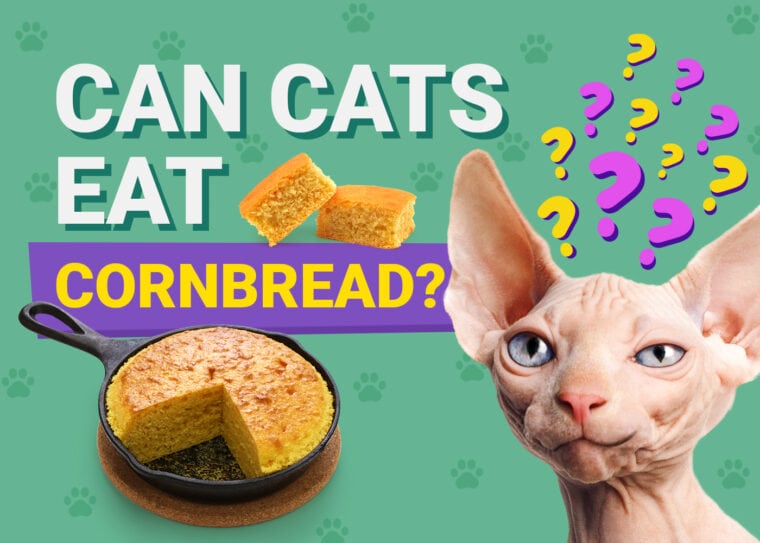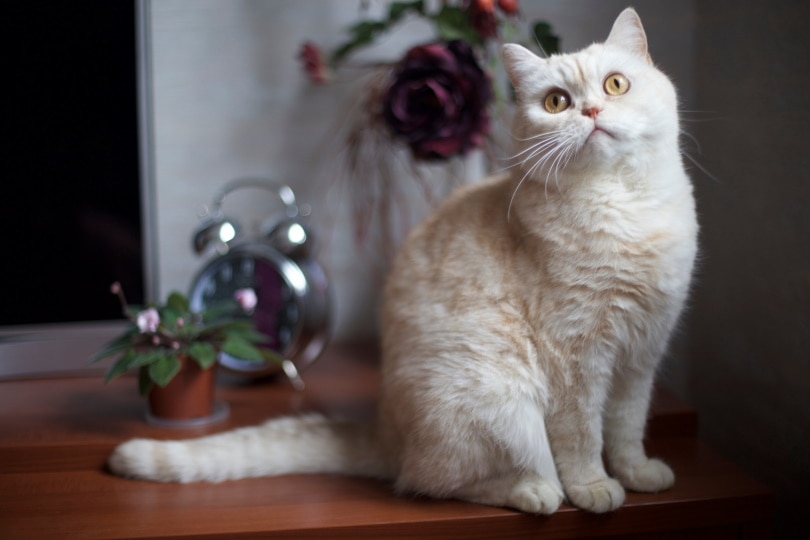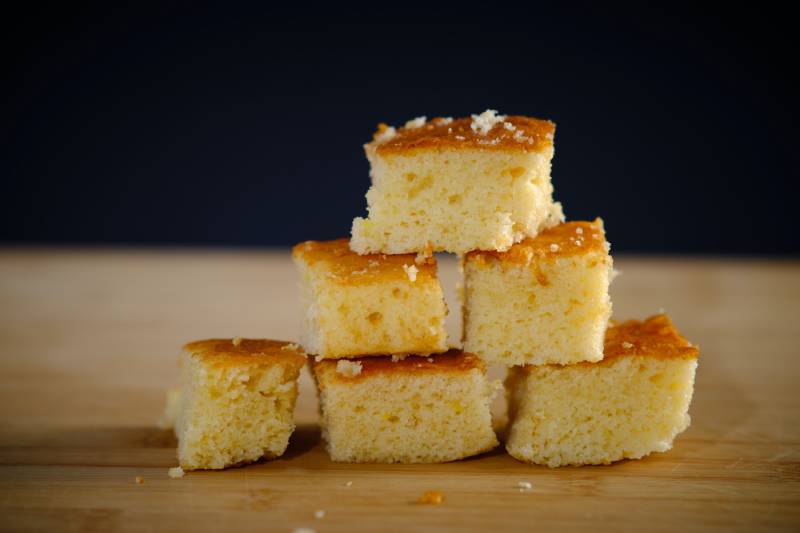
Cornbread has been a popular quick bread in our diets since Europeans first encountered it when they settled here. It was a staple for American Indians. It was simple but satisfying food. Of course, it has evolved into many forms, whether sweet or savory or with white or yellow cornmeal. A small morsel isn’t likely to hurt your cat. However, it’s not a good idea to make it a regular treat.
The reasons revolve around your feline’s physiology and nutritional needs. There’s also another compelling argument against it. Keep reading to learn more.
Feline Digestion
Many people erroneously believe that just because humans can eat something, so can their pets. Unfortunately, that’s not true, even though we share 90% of our DNA with felines.1 While we can enjoy grapes, macadamia nuts, and onions, alas, our cats cannot do so without severe health consequences.2 Often, it’s a case of a feline lacking specific enzymes to digest certain foods.
The fact remains that cats are obligate carnivores, meaning their diets consist of at least 70% meat.3 It also manifests itself physically with differences, such as shorter intestines tracts. Plant foods are harder to metabolize than animal protein. Thus, cats would have a harder time digesting cornbread since it’s plant-based.
Contrast that information with dogs. Domestication and time with humans have given them three additional genes to digest glucose and starch versus their wild counterparts. Besides, felines can’t taste sweet flavors.4 The bottom line is that your cat may not enjoy it as much as you may think. Also, we all know how felines are more guarded about what they eat. Your pet may turn up its nose at cornbread.

Your Cat’s Nutritional Needs
Evolution had other surprises up its sleeve when it came to being a cat and a carnivore. A look at a classic recipe for cornbread reveals nothing outright toxic to cats. It contains 3 g of protein, 7 g of fat, and 28 g of carbohydrates. It’s worth mentioning that a recommended allowance for carbs doesn’t exist for dogs or cats.5 The carbohydrates in cornbread offer no health advantages for felines.
Interestingly, dogs get energy from metabolizing carbs. Cats are another story. They use fat and specific amino acids in protein for fuel. Consequently, felines need up to three times more protein than canines.6 Cats need a minimum of 50 g of protein. That piece of cornbread barely makes a dent toward meeting your pet’s nutritional needs. The average cat treat probably has more protein in it.
The Case for Grains
We must also address the grain issue and corn. Many manufacturers tout grain-free, designer diets as healthier for pets. Unfortunately, science doesn’t support this assertion. If your cat has an allergy, it’s more likely to be from an animal protein than a grain. Notably, gluten allergies have never been documented in cats. You probably don’t have to worry about the grains in cornbread causing any health issues.
Unfortunately, marketers have done their job and dissuaded many people from choosing foods that contain grains. Corn and cornmeal aren’t inherently bad for your cat. The truth is that grains like corn can help prevent hairballs and improve digestion with their fiber content. That’s one point in favor of cornbread. However, something else trumps any benefits.

Pet Obesity
That serving of cornbread contains 189 calories. Let’s put that figure in context with your cat’s recommended daily caloric intake of 180–200 calories. It’s easy to see that cornbread isn’t the best choice for your cat. The high calorie count and carbohydrate content can contribute to pet obesity. That can, in turn, increase your pet’s risk of diabetes and other chronic conditions.
Knowing exactly what your feline companion can and cannot eat will help you become the best pet parent. Recognizing that not all cat bowls are equal is also key! The Hepper NomNom Cat Bowl sets itself apart from traditional options by catering to the specific needs of cats. The innovative design offers whisker relief via shallow dishes and promotes digestion with a slight bowl elevation. Find out if the Hepper NomNom is right for your cat by clicking here.
At Pet Keen, we’ve admired Hepper for many years and decided to take a controlling ownership interest so that we could benefit from the outstanding designs of this cool cat company!
Final Thoughts
We understand wanting to give your cat a treat. We all love our pets. Unfortunately, cornbread doesn’t offer your cat much to justify its inclusion in your pet’s diet. It contains a lot of carbs and sugar, which your kitty simply doesn’t need. If your pet ate some, it’s probably nothing to worry about, as long as it wasn’t a lot. Instead, we recommend sticking to a commercial feline diet that’s not grain-free.
Featured Image Credit: Marie Sonmez Photography, Shutterstock








